Measurement Teaching Resources
Is your maths class ready to dive into length measurement, measuring objects and more measurement practice? Say hello to printable units of measurement worksheets, games and digital activities created by teachers for teachers!
This collection of teaching resources was created by our expert maths teachers to help students meet Australian Curriculum standards. Each printable and digital download has undergone a rigorous review by the teachers on the Teach Starter team to ensure they’re student-ready — so you can cut down on lesson planning time!
New to teaching this part of the maths curriculum? Our teacher team knows what it’s like to suddenly teach a brand-new year level, so we’ve put together a quick guide to teaching measurement!
What Are the 4 steps of Teaching and Learning Measurement?
Students have to learn a long list of measurement concepts during their time in primary school, including:
- length
- liquid volume
- elapsed time
- mass (weight)
- area
- volume of three-dimensional figures
The good news for teachers: Most measurement concepts have very real-world applications for students. That means there's a whole world of ways to get students excited about reading a ruler or tape measure or weighing heavy objects on a scale.
But before you can get there, let's start with the basic steps to work through when you're teaching students how to measure ... well ... anything!
- Direct Comparison — One of the earliest steps of learning measurement is learning the attributes that are being measured. For example, students need to learn what length is if they're ever going to measure it. That's where direct comparison (and step 2, indirect comparison), come in. If you put 2 objects side by side, students can directly compare which is longer and which is shorter and start to understand how to measure an object.
- Indirect Comparison — What happens when you can't directly compare two objects? You can add a third as a reference point for indirect comparison, thereby increasing student understanding of the attribute being measured.
- Measuring With Non-Standard Units or Informal Units — Just as students need to understand the attribute of measuring, they also need to understand the concept of the units we use to measure such as metres or litres. Using non-standard units is the first step to teaching the concept of units, offering students the chance to work with different objects, counting how many of these 'units' it takes to make up another. This is the fundamental base of measurement.
- Measuring With Standard Units — In the final step of teaching measurement, students move on to using the formal units of measurement and learn to use measurement instruments.
Why Is Teaching Measurement Important?
There are concrete uses for learning measurement that will surely spring to mind — from using a tape measure to measure a space in a home to weighing ingredients when baking to determining the capacity of a juice glass before pouring in the liquid. These are all means for quantifying our environment.
But the benefits of teaching students about measuring lines with a ruler or figuring out mass measurements from largest to smallest go well beyond the obvious. Learning to measure helps students develop spatial and number skills.
- Plus Plan
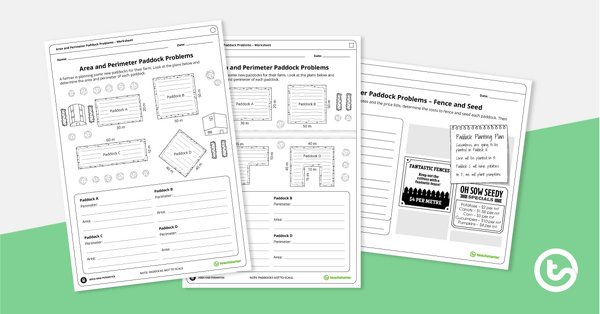
Area and Perimeter Paddock Problems – Worksheets
A set of differentiated area and perimeter worksheets.
- Plus Plan
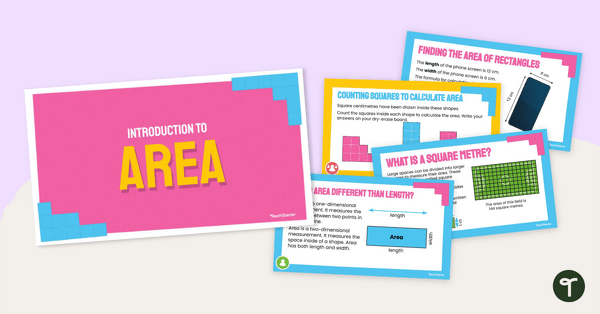
Introduction to Area Teaching Slides
Introduce the concept of measuring the area of regular shapes with this 22-slide instructional slide deck.
- Plus Plan
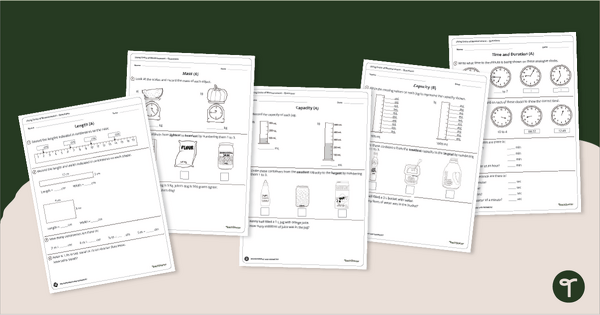
Year 3 Using Units of Measurement Worksheets Bundle
Download year 3 worksheets for using units of measurement that are linked to the Australian Curriculum.
- Plus Plan
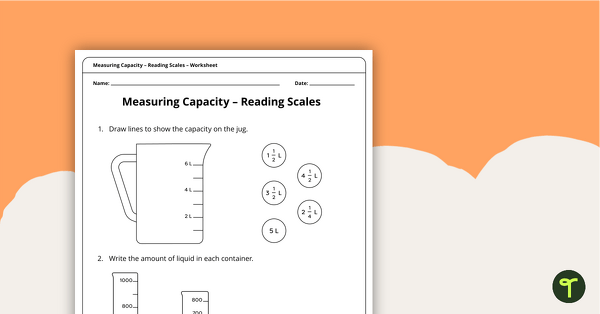
Measuring Capacity – Reading Scales Worksheet
Use this capacity worksheet to give students practice at reading scales on containers to measure capacity.
- Free Plan
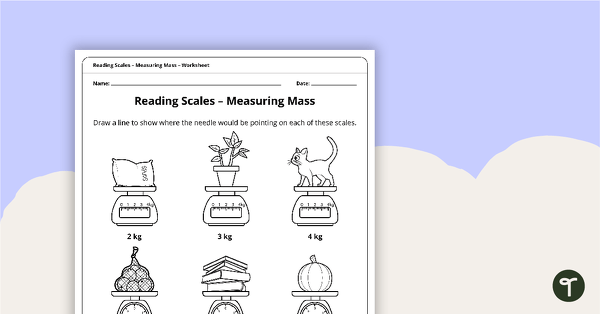
Reading Scales – Measuring Mass Worksheet
A worksheet for students to use when learning to read scaled instruments to measure mass.
- Plus Plan
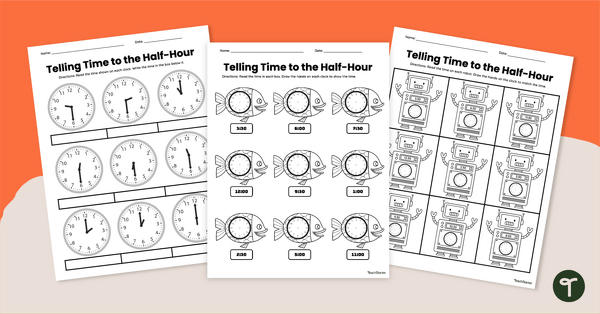
Analogue Time to the Half Hour – Worksheets
Practise telling time to the half-hour with a fun set of printable Telling Time Worksheets for Grade 1.
- Plus Plan
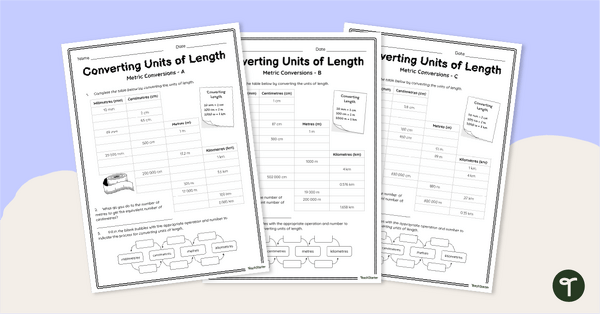
Converting Units of Length – Worksheets
Demonstrate an understanding of decimal representations while converting metric units of length with printable measurement conversion worksheets.
- Plus Plan
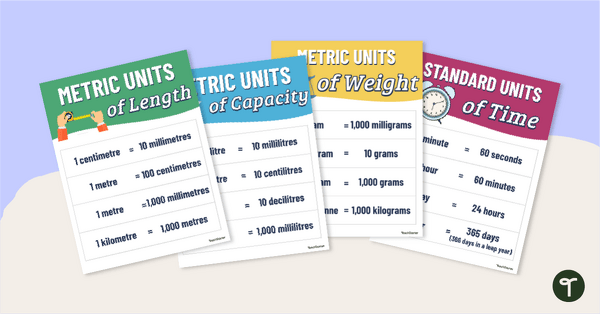
Converting Units of Measurement Posters
Use these posters to assist your students to learn and convert the different units of measurement.
- Plus Plan
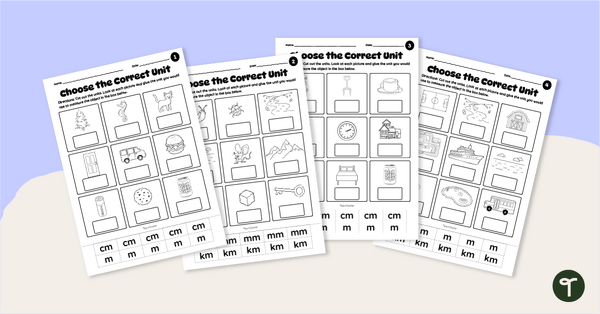
Which Unit of Measurement? - Length Worksheets
Identify the unit of measurement needed to measure the length of an object with a pack of ‘Which Unit of Measurement’ Worksheets.
- Free Plan
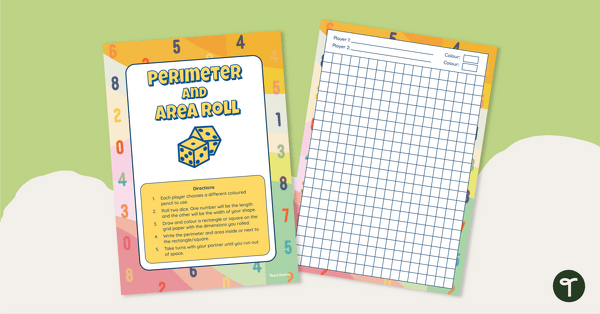
Perimeter and Area Dice Game
Use this area and perimeter dice game as a pair activity during your maths lessons on measurement.
- Plus Plan
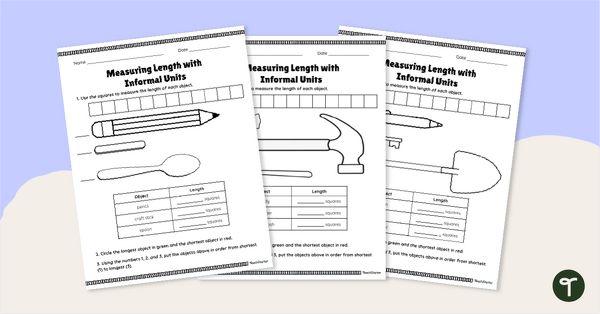
Measuring Length with Informal Units Worksheets
A worksheet to use when learning about measuring length using informal units.
- Plus Plan
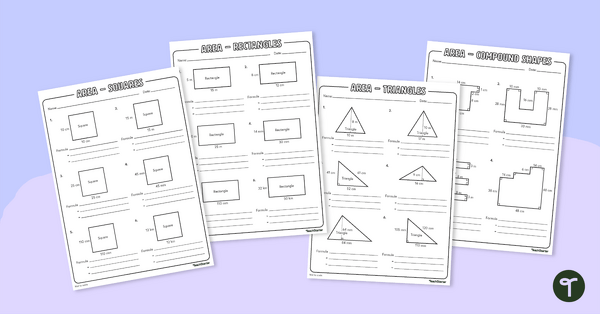
Area Worksheets
4 area worksheets.
- Plus Plan
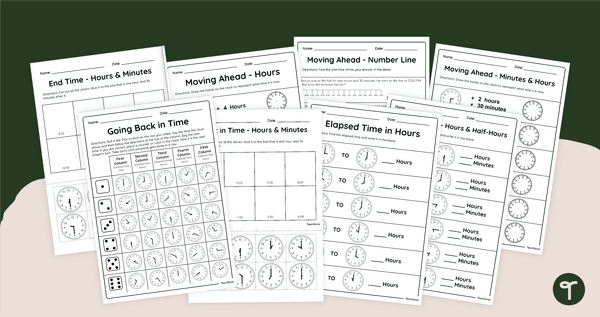
Differentiated Elapsed Time Worksheets for Beginners
Download a pack of differentiated Elapsed Time worksheets to help your students learn to calculate elapsed time in hours, half hours, and minutes.
- Free Plan

Free Telling Time to the Minute Worksheets
A worksheet for telling time to the minute and converting between analogue and digital times.
- Free Plan
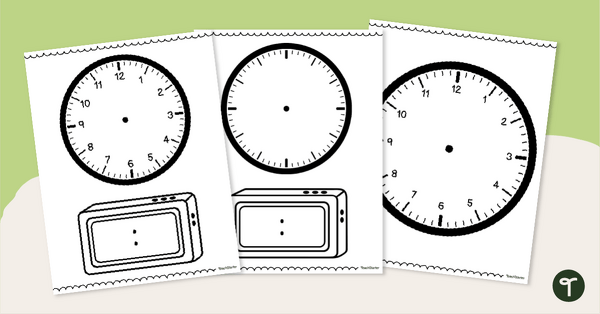
Blank Digital and Analogue Clock Templates
Practise writing the time in digital and analogue form with this set of blank clock faces.
- Plus Plan
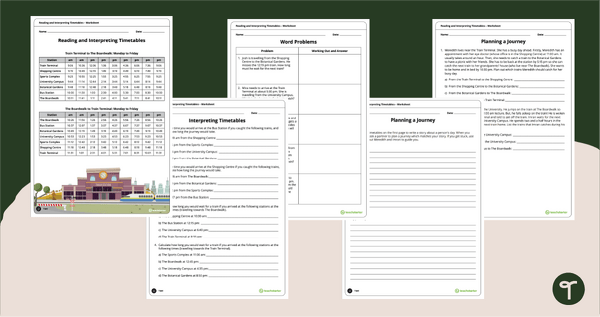
Reading and Interpreting Timetables Worksheets
Five pages of worksheets that allow students to work on reading and interpreting timetables.
- Plus Plan

Telling the Time Poster
Help your students learn to tell the time to the hour, half-hour, quarter, and minute with a printable Telling the Time anchor chart PDF.
- Plus Plan
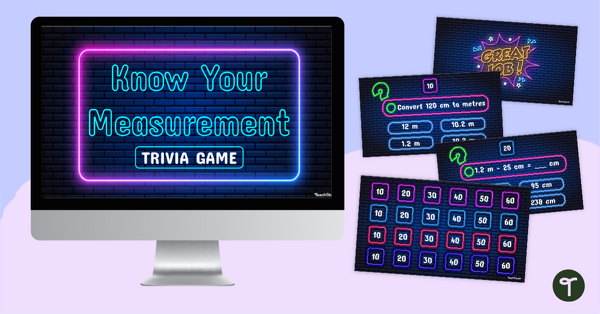
Know Your Measurement Conversions Trivia Game
Practise measurement conversions involving time, length, capacity, and volume with an exciting Know Your Measurement! Trivia Game!
- Plus Plan
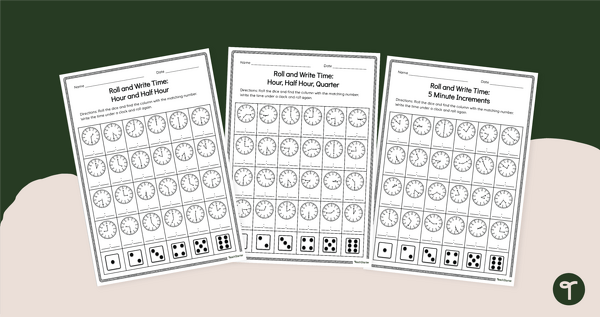
Roll and Write - Telling Time Dice Game
Have fun learning how to tell time with a Roll and Write Telling Time Dice Game!
- Plus Plan
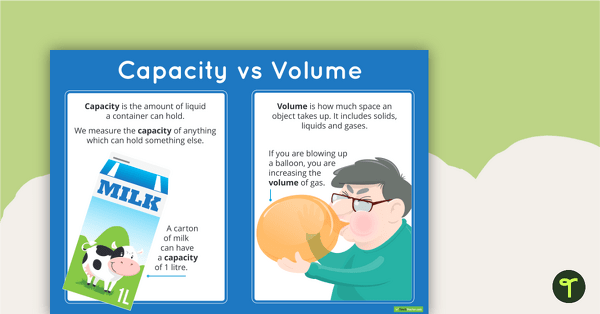
Capacity Vs Volume Poster
A poster explaining the difference between capacity and volume.
- Plus Plan
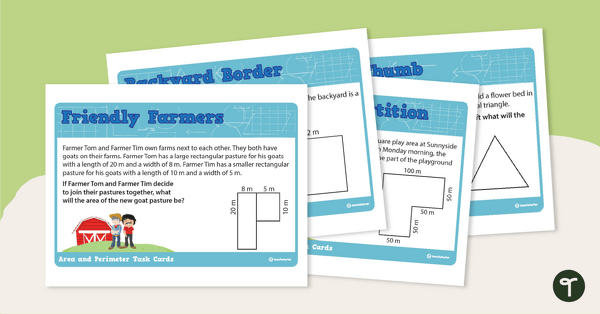
Area And Perimeter Task Cards
Use these area and perimeter task cards in your maths lessons to give your students practice solving real-world word problems.
- Plus Plan
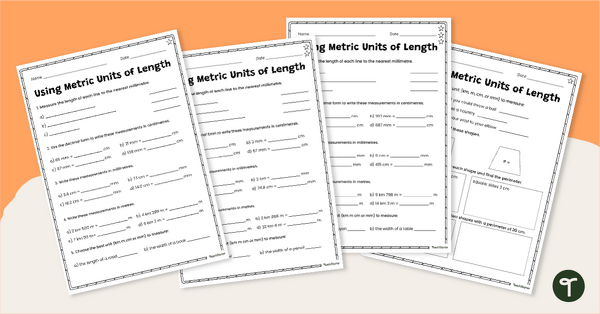
Using Metric Units of Length Worksheets - Differentiated
Use differentiated metric measurement worksheets to practise identifying units, measuring, and converting metric units of length.
- Plus Plan
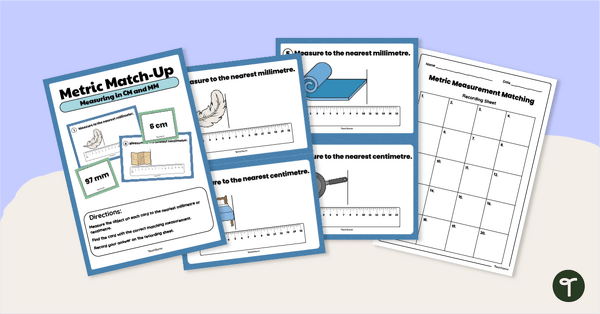
Measuring in CM and MM Matching Activity
Practise measuring objects to the nearest centimetre and millimetre with this match-up activity.
- Plus Plan
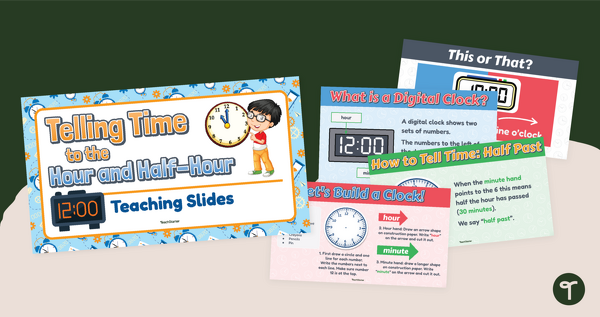
Telling Time to the Hour and Half Hour Teaching Slides
Teach how to tell time to the hour and half hour with an interactive teaching slide deck.
- Plus Plan
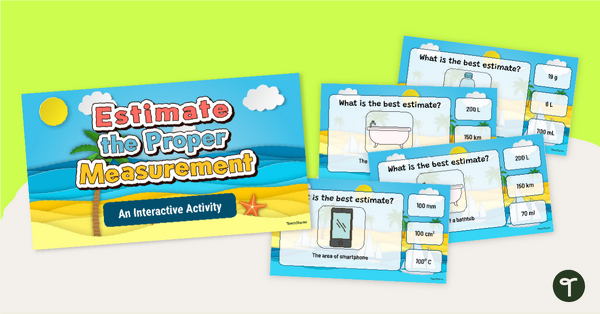
How Much Does it Measure? Estimating Units Interactive (Mixed Units)
Estimate units of mass, volume, temperature, length, and more with an engaging, interactive measurement game.
- Plus Plan
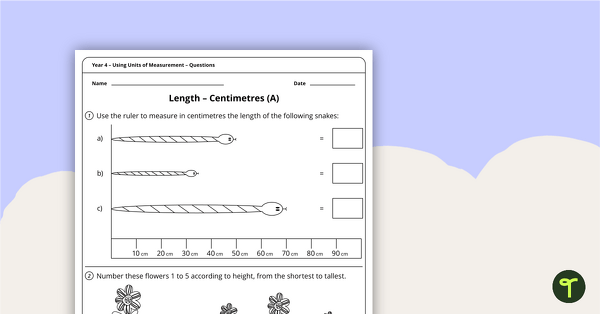
Using Units of Measurement Worksheets - Year 4
16 measurement worksheets linked to the Australian Curriculum.
- Plus Plan
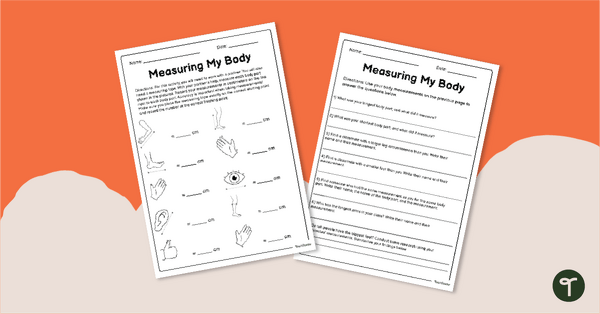
Measuring My Body – Length Worksheet
Explore linear measurement with an engaging collaborative activity where students measure different body parts and compare them.
- Plus Plan
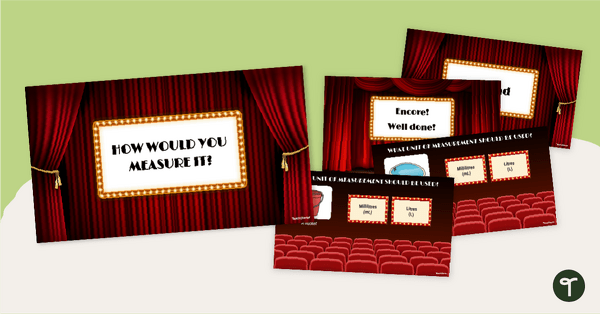
Selecting Units of Capacity — Interactive Game
Estimate the units needed to measure capacity with an Interactive Measurement Game!
- Free Plan

Perimeter and Area Poster
A poster that explains and compares the concepts of perimeter and area.
- Plus Plan
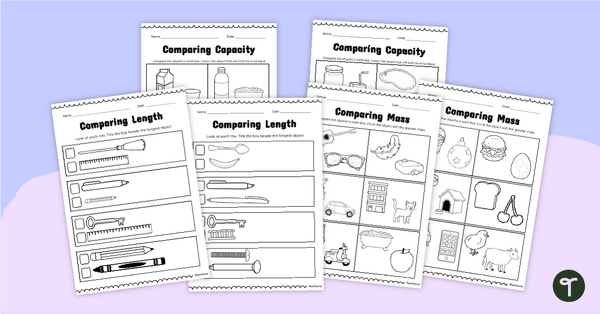
Measurement Worksheets for Foundation - Mass, Length, Capacity
Practise comparing units of mass, capacity, and length with a printable pack of foundation measurement worksheets.
- Plus Plan
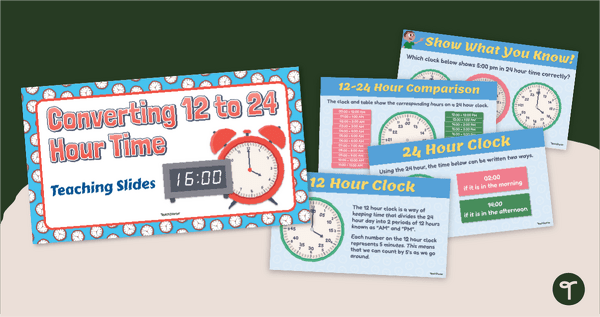
Converting 12 to 24 Hour Time Teaching Slides
Teach your students to convert between 12 and 24-hour clock times with an interactive teaching slide presentation.
- Plus Plan
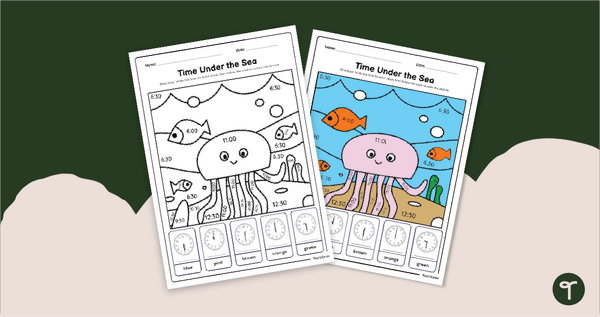
Telling Time - Year 1 Maths Colouring Sheet
Practise telling time to the hour and half hour with a fun Telling Time Colour By Code maths worksheet!
- Measurement Worksheets
- Measurement Games
- Measurement Posters
- Measurement Projects
- Measurement Templates
- Measurement Teaching Presentations
- Measurement for Preschool/Kindergarten
- Measurement for Foundation Year
- Measurement for Year 1
- Measurement for Year 2
- Measurement for Year 3
- Measurement for Year 4
- Measurement for Year 5
- Measurement for Year 6
- Measurement for Year 7